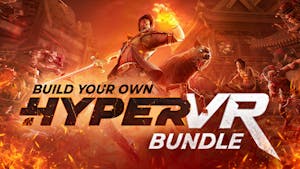
About This Game:
Welcome to Ecliptica—a survival simulation on a distant, unforgiving planet where everything is governed by brutal laws of economy, power, and nature.
Nothing here comes easy. Resources are limited, the environment is hostile, and the local biosphere sees you as a threat. To survive, colonists must cooperate, trade, and compete in a fully simulated, reactive economy that responds to every decision made by both players and non-player characters (NPCs).
Explore a procedurally generated open world, establish outposts, found your own corporation—or join one of the many NPC-led factions competing for territory and survival. Whether you choose diplomacy, trade, or domination, every decision shapes the fate of the colony.
Key Features:
🔧 First-Person Colony Survival Simulator
Manage resources, make critical decisions, and build your place in a dangerous new world—all from a first-person perspective.🌍 Procedurally Generated Open World
Discover new regions, colonize untamed land, and adapt to a diverse and dangerous environment filled with opportunity and risk.💹 Living, Player-Driven Economy
Every item, resource, and service is part of a real-time supply and demand network. Trade routes, shortages, and production chains evolve dynamically.🏢 Corporations and Competition
Join existing corporations or start your own. Form alliances, wage economic warfare, or engage in diplomacy to rise above the rest.🧠 Active NPC Factions
NPC colonists are fully part of the game world. They form corporations, establish settlements, compete for resources, and interact with players through trade, diplomacy, and rivalry.⚙ Total Strategic Freedom
Build infrastructure, expand your influence, and shape the world’s economic and political landscape through your actions.
Welcome to the procedurally generated, dense, infinitely vast, and stylized world of Ecliptica.
You are one of the colonists on an alien planet, fighting for the survival of both your colony and yourself. In this world, you can:
Mine: All resources in the game are extracted, processed, and created in your colony's factories; nothing appears out of nowhere.
[/*]Trade: All prices for all goods are regulated solely by a free market, without any restrictions whether it's food or high-tech power cells.
[/*]Manage: Every worker wants to become a manager: more power means more money. But if that's not enough, you can create your own corporation and bring the entire colony under your control.
[/*]

Hello everyone! We've reached a moment to share our progress. Since Developer Journal 7, we've accomplished a lot, and today you can finally see the impact of our new vertex adaptation system.
Infinite World with Massive View Distance
Thanks to this new system, we've managed to create a truly infinite open world! The map is no longer limited by a pre-generated, fixed area as it was before. Now, the world of Ecliptica is endless, just like in Minecraft, and it boasts an incredibly large view distance of 20 kilometers in diameter.
[hr][/hr]New Biomes and Improved Shading
We've also added a new biome to the game: the Plains, and we've significantly improved the game's shading.
[hr][/hr]Convenient Construction
Furthermore, we've introduced a player-friendly building construction mode. Now, you can not only focus on building your business but also an entire city! Though, one doesn't stop the other.

Hello everyone!
The time has come to share one of our most important achievements to date. Although this is a purely technical advancement, which will likely be of most interest to other Qt developers, it will also affect all players.
[hr][/hr]From the Old System to the New: Why We Changed?
Previously, like most developers, we used a tile-based LOD system for generating the game world. Essentially, we created chunks based on heightmaps using Qt HeightFieldGeometry. This solution worked initially, but over time, our ambitions for draw distance grew. When we added rocky and sandy terrains to the game, we encountered many problems:
Grid around tiles: Unsightly lines separating parts of the world.
[/*]
[/*]
Increased CPU load: The number of tiles reached up to 1600, heavily stressing the system.
[/*]Difficulties with smoothing transitions: When players changed altitudes (e.g., during resource extraction), transitions looked unpolished.
[/*]
These problems were very difficult to solve.
[hr][/hr]Inspiration from UE5 and Our Solution
In the process of finding solutions, we came across the terrain implementation in UE5, specifically their Nanite system. This impressed us greatly, and we decided to create an analogous system in Qt.
[hr][/hr]The Result: A More Detailed and Lighter World
Unlike UE5, our system currently works only for primitives (e.g., ocean or ground), but it has completely solved all our problems! Now we can create much more detailed terrain that is significantly less demanding on gaming hardware.
We are very excited about these changes and believe they will make the game world even better and more performant for each of you!
https://youtu.be/Kva9UvD_kng
These are all the missed development logs since we started publishing.
Developing Log 0
We chose a first platform to publish super early access for our game. And although our main goal is to publish on Steam, while the game is still very raw, we will be posting builds on the itch.io platform, so that everyone who is interested in whether it is possible to write a full-fledged big game with an OpenWorld system on the Qt Quick 3D engine could feel for themselves how and what is obtained in this experiment.
Spoiler: Yes, it is possible!
Development log 1
As you know, we chose a not-so-easy way to implement our product; we chose the Qt Quick 3D engine as our main development tool. And of course, a few screenshots of what the early version of the game will look like.




And now the most interesting part - What we did last week.
Of course, we still have a lot to do, and soon we will organize platforms for collecting funds for development. So that we have more opportunities to prepare as full an early version of the game as possible.
I also want to note that we are not going to compete with developers who make games on Unity or Unreal Engine, (P.S. in terms of beauty and rendering, these guys will definitely beat us no matter how hard we try), our goal is to make the game exciting and enjoyable to explore. We chose Qt so that the final product would be truly unique and interesting to people. Since we will not have tempting opportunities to throw ready-made typical mechanics into the game.
Development log 2
What we did last week:
Development log 3
Manager - this is the most popular job in the new colony among all residents And apparently, a certain Anthony Takahash has already rushed to get a job in Capital Town - it seems to be the most prestigious job in the initial stages of the game - after all, that's where all the starting goods necessary for survival in the game are sold. And it seems that our new cunning manager has already noticed that the demand is simply huge, and the first thing he did was raise the prices for food. The player can also get this job - if they have time, of course)
Residents - Residents are the main inhabitants of the new city; in fact, they are the main characters of our game. They have needs and ambitions, and based on this, they try to find their place in the economy of our game.
Significant improvements to open-world generation, and although there is still a lot of work to do in this segment, we have managed to diversify locations even within a single biome. You can see how it looks now.
Updated the contents of the Forest biome
Lets go for a walk in our new world with our new dev log video!!!
Development log 4
What is the City in the Ecliptica world? The City is a place where everyone can find food, a job, and a home.
The city is run by corporations; corporations own property for which residents work. Each resident decides for themselves who to work with and what activity to engage in.
Also, each of them can found a new corporation if they accumulate enough money.
City - this is just a place
Construction - is a process that requires significant investment, and it also creates economic entities that, in turn, open up opportunities for residents.
Free pricing - you and other game participants can set any prices for your goods - but it is worth remembering that there are competitors who will happily bankrupt a greedy businessman)
Development log 5
The week is coming to an end, and its time to share what is perhaps our most notable achievement lately.
Weve significantly optimized the game and increased the effective render distance to 1700 meters from the player which is more than what most games with procedurally generated worlds offer.
Effective render distance means not just terrain visibility, but also full rendering of vegetation and other decorative game elements that bring the world to life.
Additionally, thanks to Qt Instancing, we were able to greatly increase the number of objects in the scene without compromising performance.
The current build can now handle 10,000 to 20,000 objects simultaneously without major issues.
Of course, this parameter will be included in the settings, so players can adjust it to suit their systems capabilities.
Stay tuned more improvements coming soon!
Development log 6
Developer Log 6
This is the sixth entry in our development log.
In this update, were introducing new buildings and the terminal system.
Buildings
Buildings are standard in-game objects that perform various functions:
Each building is an interactive element and plays a key part in the games economy and structure.
Terminals
All buildings are equipped with terminals interfaces that allow the player to interact with them.
Through terminals, players can control production, manage storage, or initiate building-specific actions.
More functional and visual improvements are in progress.
Minimum Setup
- OS: Ubuntu 22.04 / SteamOS 3+Memory: 8 GB RAMStorage: 1 GB available space
- Memory: 8 GB RAMStorage: 1 GB available space
- Storage: 1 GB available space
Recommended Setup
- OS: Ubuntu 24.04 / SteamOS 3+Memory: 16 GB RAMStorage: 1 GB available space
- Storage: 1 GB available space
[ 6486 ]
[ 1519 ]
[ 2422 ]





































